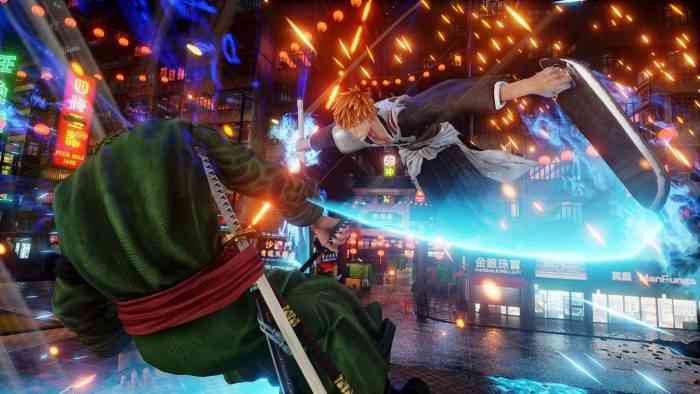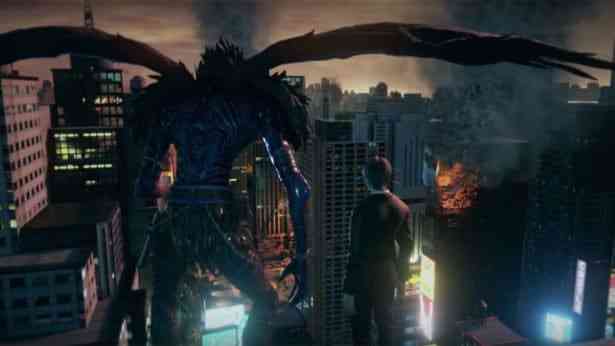Jump Force Review
Shonen Jump has been delivering iconic characters and stories that have shaped the landscape of manga, anime, and Japanese culture in general for the past 50 years, and Jump Force intends to celebrate that legacy by bringing a ton of classic characters together to duke it out for the fate of their own worlds, as well as ours. It features brand new original characters by Dragonball Z creator Akira Toriyama, and allows players to create their own fighters to defend Earth and the Jump Worlds alongside their favorite Shonen heroes. It’s a pretty exciting prospect for manga and anime fans everywhere, and an ambitious project for developer Spike Chunsoft, so how does Jump Force live up to the hype? Well, it doesn’t.
*Indiscernible Anime Screaming*
Jump Force kicks off with Frieza leveling half of New York before a handful of Shonen heroes show up to take him on, including Trunks, who revives “you” with an “Umbras cube”, which is basically the MacGuffin that drives the entire story from here on out. This is where character creation comes in, and you can decorate your fighter with big eyes, over-the-top makeup and spiky anime hair to your heart’s content. It could use a few more options overall, as every piece seems to have been lifted from characters in the game’s roster and not a whole lot of original designs to work with. Plus it mainly focuses on customizing your character’s face more than anything else, which they will not stop moving the entire time you’re working on them.
From there, the game drags you through a bunch of terrible cutscenes cut up by the game’s tutorial, and makes you choose between Teams Alpha, Beta, or Gamma, which will decide the stronger abilities you’ll be able to learn and use to practically eradicate the need for any other moves in the game. For a fighting game, Jump Force’s combat is pretty shallow, and I’ve found no combos in the game whatsoever so far – if you start off an assault with the “light attack” button, you’re pretty much committed to a string of light attacks until the animations are complete. There’s no cancel button for basically anything, and the charge-up attacks can have pretty lengthy animations to go with them. One interesting thing the game tries is relegating teams to one health bar – you’ll go into each fight with more than one fighter on your team, but once that health bar is empty, you won’t be able to switch characters in an effort to salvage victory. Something I genuinely enjoyed about fighting is that as characters outfits will wear and tear as they take damage, and some parts of environments will be destroyed from the sheer power of the battle taking place. There’s also a chance to knock enemies into another area of the stage entirely like in the Injustice games. Also, each fight starts extremely abruptly, so if you’re the type to check your phone during loading screens, be prepared to take a couple hits at the beginning of each match.

You’ll earn gold and experience from every battle you participate in – as you would expect, experience levels up your character to grow in power which allows you to take on more missions, and you can use your gold to buy new J-skills, abilities, and hand-me-down clothing from the rest of the game’s roster of characters. You can also buy one-use items that will boost certain stats in your next fight, which is great since the shallow combat eliminates the need to be good at this game. There’s also something called “Active Points” that you get for doing just about anything in the game’s hub world – completing missions, talking to characters, buying stuff – and you can use them to register for events, which, as of writing, there are none to participate in, so I haven’t gotten to use any.
Energy Level Decreasing with Every Blow
All of the game’s characters are unlocked right off the bat if you want to jump into PvP, but if you’re playing story mode you’ll have to unlock a bunch of them as you go. The story itself is pretty standard Shonen-fare, some alien-looking dudes come to Earth to destroy it and start possessing characters from other Jump Worlds using the aforementioned Umbras Cubes – but you’ll spend most of it fighting their generic cronies, the “Venoms.” The predictably bad dialogue can be charming every now and then in a cheesy sort of way, but a lot of the animation and art direction can really chew the scenery – Goku’s hair being a main offender. Animations can also get pretty wacky in fights as things happen so fast that sometimes I can’t tell if something was a glitch, or if every character is supposed to stretch like One Piece’s Luffy. My personal favorite animation is your character’s jump in the game’s hub world – it’s sure to provide more entertainment on its own than some of Jump Force’s other content. If you’re playing online, the hub world will be populated by other players who your cursor will lock onto for some reason, even though you can’t interact with anyone but the designated NPCs.

Jump Force also has some of the most performance issues I’ve seen in a triple-A title in a while. Characters and textures pop-in at every turn, draw distances are remarkably short, there’s a ludicrous amount of loading screens and at one point it actually crashed, which was a first for me on my PS4 Pro. The game also supports HDR, but I have yet to find a reason for it, or example of its implementation aside from it dimming my 4K TV and not changing the way colors are presented at all. The framerate buckles for just about any reason whatsoever, especially when cycling through characters to choose for your team.
Unfortunately, Jump Force feels like an unfinished game that had a lot of potential and cause for celebration riding on it. The simple-minded combat gets old after just a couple hours, and almost everything in the hub world makes me question the creative process behind the game entirely. There’s no reason for players to see people they can’t interact with when it just takes up processing power that could be used to solve the game’s performance issues. The vast majority of any joy I experienced playing this game came from reveling in the cheesy dialogue and Garry’s Mod-level animations your character is condemned to in the hub world. If you’re looking for a solid fighting game, or if you’re looking to celebrate 50 years of culture-defining art and beloved characters, this ain’t it chief – you’re better off putting your Crunchyroll subscription to good use.
Be sure to check out our reviews for February’s other big releases as well, including Metro: Exodus and Far Cry: New Dawn.
***PS4 code provided by the publisher***
The Good
- Wide Range of Classic Characters
- Destructible Outfits and Environments
The Bad
- Lots of Performance Issues
- Shallow Combat
- Elementary Animations
- Lame Customization

